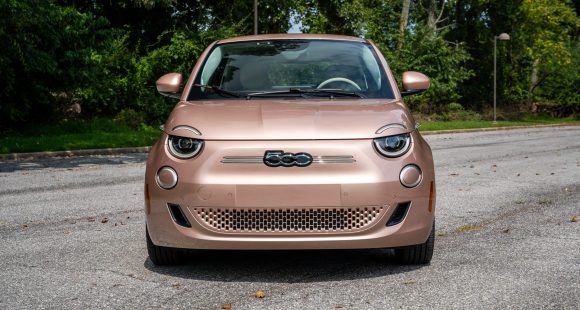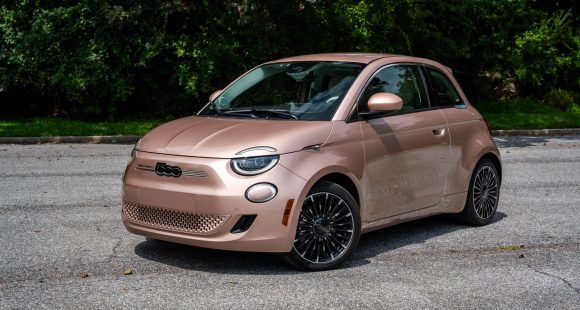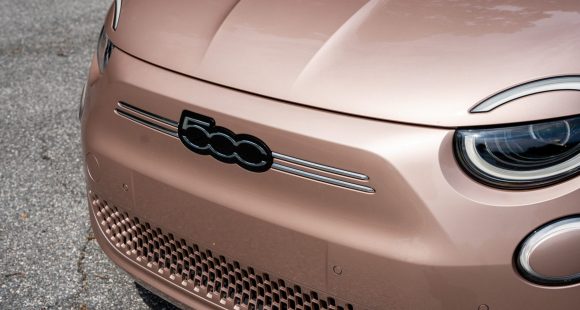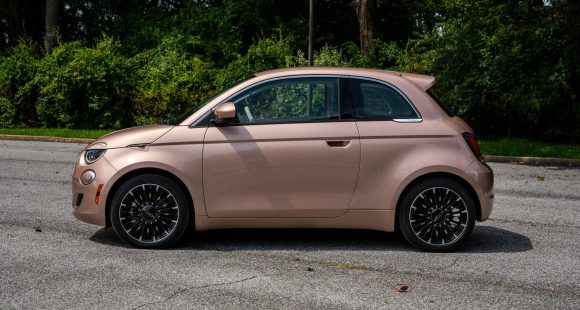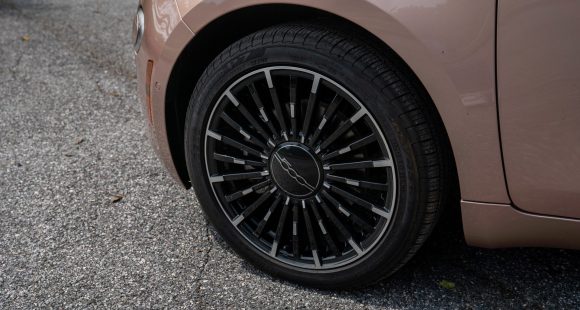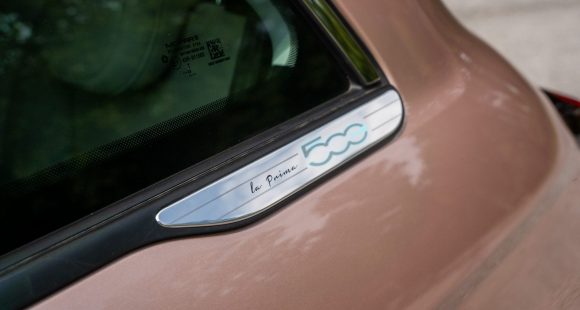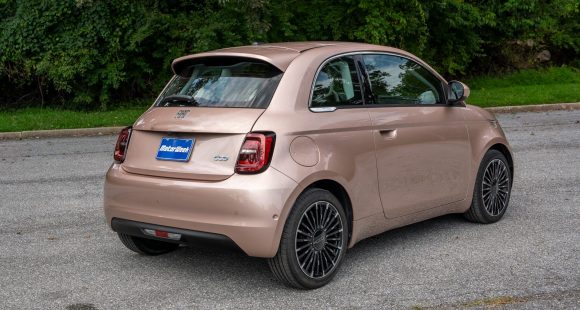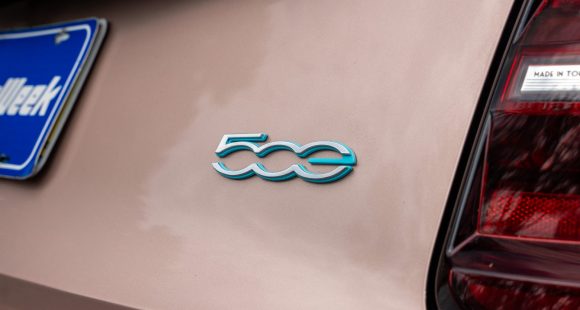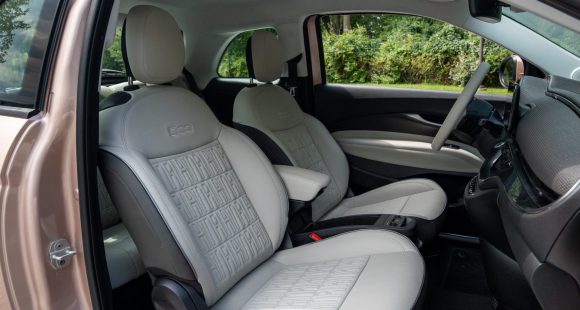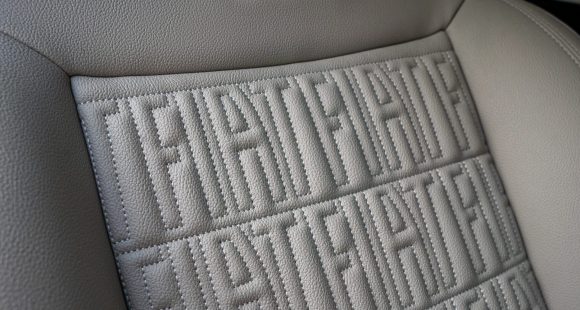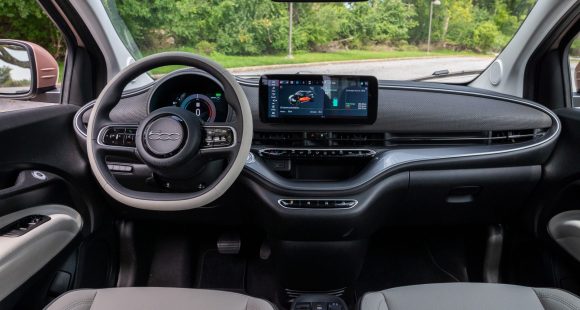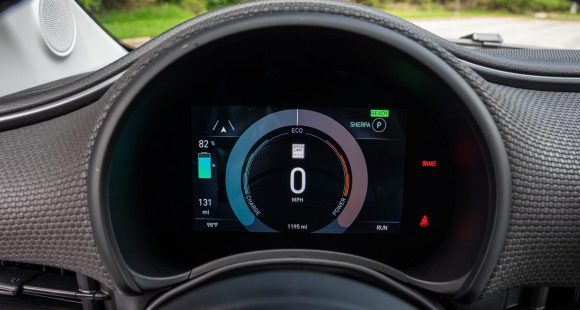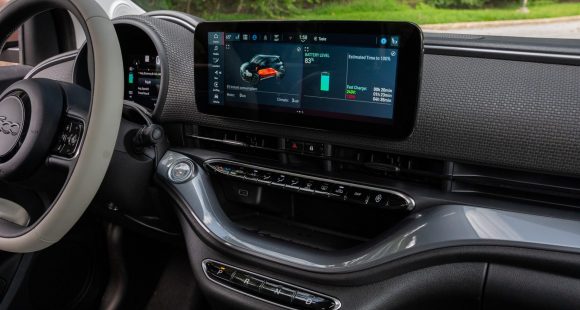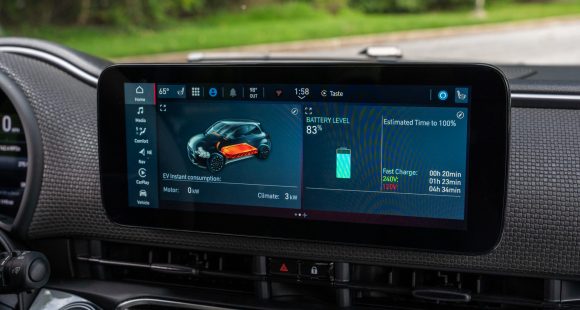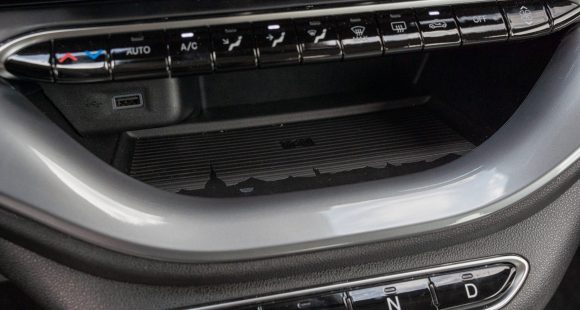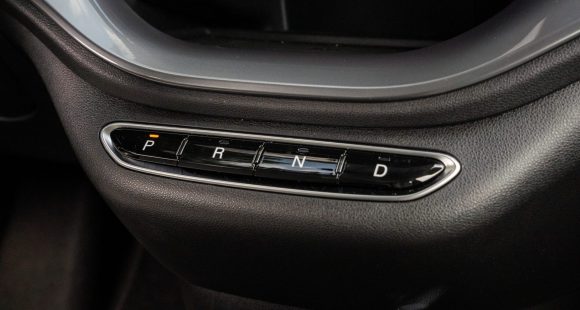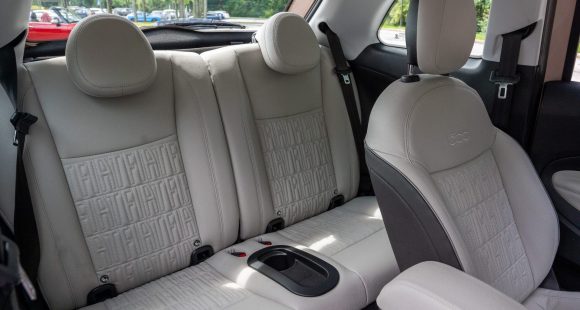2013 Hyundai Santa Fe
The Hyundai Santa Fe has staked quite a claim for itself in the vast expanse of two-row crossover land. On the other hand, Hyundai’s 3-row Veracruz didn’t do so well. So why not try to fix that by capitalizing on the Santa Fe name? So along with the recently introduced 5-passenger Santa Fe Sport comes a new 7-passenger model named simply, Santa Fe. Will all of that shuffling result in a winning hand? Well it’s time to place your bets!
Without a doubt, Hyundai has certainly gone “all-in” in recent years, with a nearly constant onslaught of fresh products and new segment entries. The newest goes by a familiar name, the 2013 Hyundai Santa Fe. It competes against other mid-to-larger three-row crossovers like the Mazda CX-9, Honda Pilot, and Chevrolet Traverse, just to name a few.
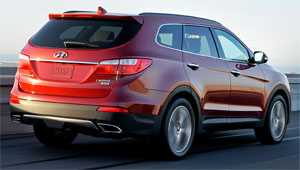 Compared to the new two-row Santa Fe Sport, the Santa Fe is 8 ½ inches longer; riding on a stretched 110.2 inch wheelbase. Like most rivals, a V6 powertrain is standard. Here it’s the Azera’s 3.3-liter V6 feeding power to the front or all-wheels through a 6-speed automatic. Horsepower is 290, with torque coming in at 252 lb-ft.
Compared to the new two-row Santa Fe Sport, the Santa Fe is 8 ½ inches longer; riding on a stretched 110.2 inch wheelbase. Like most rivals, a V6 powertrain is standard. Here it’s the Azera’s 3.3-liter V6 feeding power to the front or all-wheels through a 6-speed automatic. Horsepower is 290, with torque coming in at 252 lb-ft.
The combo is good for Government Fuel Economy Ratings of 18–City, 25-Highway, and 21–Combined in 2-wheel-drive models. We averaged a good 22.0 miles-per-gallon of Regular in mixed driving. It also offers a good amount of muscle for daily duties, including good passing power and towing up to 5,000 pounds.
Being a family SUV, it’s what’s inside matters the most, and here our feelings about the new Santa Fe are more mixed.
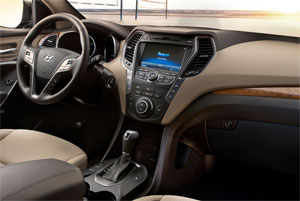 Everything looks nice; the layout is fine; with deep hooded gauges, an easy to use center stack, and standard Blue Link telematics. But the environs come off as less expensive as both the old Veracruz and newer rivals like the Nissan Pathfinder. Seats are comfortable, but again the cushions grab us as short and thin. In Limited trim the second row is Captain’s Chairs for a capacity of six. Our 7-seat GLS had a 40/20/40 split bench, with a 60/40 slider as an option.
Everything looks nice; the layout is fine; with deep hooded gauges, an easy to use center stack, and standard Blue Link telematics. But the environs come off as less expensive as both the old Veracruz and newer rivals like the Nissan Pathfinder. Seats are comfortable, but again the cushions grab us as short and thin. In Limited trim the second row is Captain’s Chairs for a capacity of six. Our 7-seat GLS had a 40/20/40 split bench, with a 60/40 slider as an option.
Ease of access to the 50/50 split third row is good, and it does provide surprising room for adults along with its own climate controls. Maximum cargo capacity is a respectable 80.0 cubic-ft, with 40.9 behind the second row, and 13.5 behind the third. Our GLS tester did not include the Limited’s power rear hatch, but the lift gate is very light, so we didn’t feel that it was necessary.
Neither is running quarter miles in this family wagon, but that’s what we do, so off to the track we went for a 0-60 time of only 7.4 seconds, and a sprint through the quarter of 16.0-seconds flat at 90 miles per hour. Braking from 60 felt very good for a mass market hauler. Stops averaged an acceptable 131-feet with immediate response and feedback from the nice firm pedal. But dodging cones was not so impressive; with slow steering, plenty of body roll, and a clumsy feel that all work together to constantly remind you how big the new Santa Fe really is.
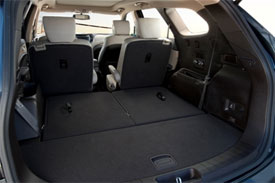 The Santa Fe features sharper lines over the rear wheels, has chrome-tipped dual exhaust, a tow hitch cover, a slightly different take on the grille, and 18-inch wheels.
The Santa Fe features sharper lines over the rear wheels, has chrome-tipped dual exhaust, a tow hitch cover, a slightly different take on the grille, and 18-inch wheels.
Santa Fe pricing starts at a class reasonable $29,455, with the Limited model starting at $34,025. All-wheel-drive is available on either model for $1,750 more.
The 2013 Santa Fe is all around competent and a good value, if not really a standout. A nice vehicle, but clearly a step down in image from the Veracruz it replaces. Still, the Santa Fe name may be just what it takes to give Hyundai a serious player in the larger crossover segment.
Specifications
- Engine: 3.3-liter V6
- Horsepower: 290
- Torque: 252 lb-ft.
- 0-60 mph: 7.4 seconds
- 1/4 mile: 16.0 seconds @ 90 mph
- EPA: 18 mpg city/ 25 mpg highway
2024 Fiat 500e
Fiat’s Electric Car Is Also Fiat’s Only Car
EVs are coming in all shapes and sizes these days, but few have a more recognizable shape than this pint-sized Fiat 500e. After all, it first arrived on our shores more than a decade ago. Well, much has changed since then, and there’s an all-new, second-gen 500e now hitting the streets. So, let’s see if it can keep the Fiat brand relevant here in the U.S.
Fiat returned to the U.S. for 2012 with the cute and subcompact 500. Their lineup quickly expanded with several 500-based models, including the all-electric 500e. They even launched a Mazda Miata-based roadster, the 124 Spider. Who would have thought that 12 years on, the only one left would be that 500e? For 2024, it kicks off its 2nd generation here.
At least they left us with not just any 500e, but a La Prima 500e. According to Fiat, it is “Inspired by Beauty,” as one of four trims initially available. There’s also Inspired by Music, Inspired by Los Angeles, and (RED), in parentheses, representing Fiat’s commitment to helping fight global health emergencies. A Giorgio Armani Collector’s Edition is due in 2025.
Our Inspired by Beauty 500e came painted in Rose Gold, which we have to admit may not be beautiful to everyone. But, have no fear, there are plenty of other colors available, one of which we will be adding soon to our long-term test fleet. We actually love most everything else about the exterior of this charming character, boldly showcasing its Italian flair while bringing iconic 500e style and classic proportions to the electrified era.
And it’s quite fun to drive too. Not exactly on the MINI Cooper level, but it certainly has some of that go-kart vibe, with lots of weight down low in its wide and short platform along with quick steering that has you wanting to dart in and around traffic. There’s no lack of safety and convenience features packed into this tiny package. Automatic Emergency Braking and Lane Keep Assist are standard, and inside you’ll find plenty of charge ports and even wireless device charging and integration. There’s also some fine stitch work and subtle reminders of its provenance. Front seats are plenty spacious for even large adults. The rear seats? Well, except for little ones, you’d best just fold them down for added cargo room and think of this as a two-seater hatchback.
Light steering and minimal understeer had us zipping in and out of cones with ease, with the kind of playfulness and toss-ability you can only get in a small car.
The 500e’s single 87-kW motor powers its front wheels to the tune of 117 horsepower and 162 lb-ft of torque. A 42-kWh battery charges at a max rate of 85 kW, getting you to 80% in 35 minutes on DC fast charging; but charging to 100% on Level 2 only takes 6 hours, so you can easily charge it overnight at home. The 500e’s maximum driving range is rated at 149 miles, but with all-season tires it drops to 141. Not to worry, as we were on pace for 174 miles in our driving loop. And using just 29 kWh of electricity per 100 miles, the 500e is quite efficient.
It’s not fast by EV standards, but quicker than most combustion engine subcompacts, even spinning up the tires quite a bit at our Mason Dixon test track. We got to 60 in a pretty quick 7.9 seconds; but that was also where things started to taper off. Speedometer numbers were definitely building less quickly towards the end of the quarter-mile, but for a tiny car it felt plenty smooth and stable down the track. We finished the quarter-mile in 16.2 seconds at 84 mph. There are three drive modes including “Range,” where regenerative braking allows for smooth one-pedal driving.
The 500e felt even better in our handling course, light steering and minimal understeer had us zipping in and out of cones with ease, with the kind of playfulness and toss-ability you can only get in a small car. We found we could push incredibly hard before there was any intervention from stability systems. The only things less than perfect were a touch too much body roll, and the lack of bolstering in the seats to keep us from sliding around. Coming in just under 3,000 lbs., the 500e weighs less than many ICE cars on the road. And that was evident in our braking test, where distance averaged a short 99 feet; stops were straight, fade free, and with very little nosedive.
Perhaps the most gorgeous thing of all about this new 500e is its price tag before incentives, starting with the (RED) at $34,095; from there, Inspired by Beauty, Music, and Los Angeles all have unique features, and all sticker for $37,595. That’s an inviting on-ramp to the EV lifestyle highway, especially if you can catch a cheap lease, though with the limited amount of driving range we wouldn’t stay on there for too long.
But that just means the Fiat 500e is perfectly suited for city dwellers, short distance commuters, and anyone looking for a second car for daily errands that quickly “fills-up” at home every night. Everyone should make room for a little Italian flair in their life, and that’s the Fiat 500e– equal parts charming, quirky, and fun.
Specifications
As Tested
- Motor Setup: Single 87-kW Motor
- Battery Size: 42-kWh
- Horsepower: 117
- Torque: 162 lb-ft
- EPA Range: up to 149 miles
- 0-60 mph: 7.9 seconds
- 1/4 Mile: 16.2 seconds at 84 mph
- Braking, 60-0 (avg.): 99 feet
- MW Test Loop: ~ 174 miles
- Efficiency: 29 kWh / 100 miles

















